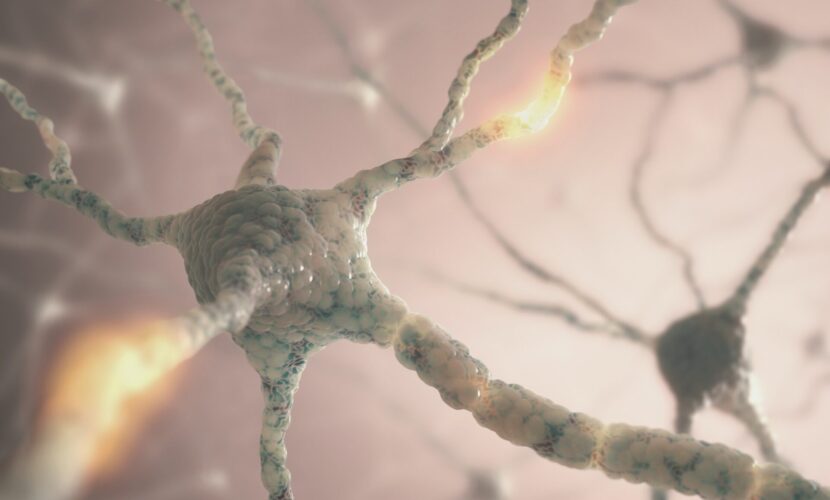According to recent studies, neurodegenerative diseases such as Alzheimer’s disease, Parkinson’s disease, and amyotrophic lateral sclerosis (ALS) have been reported to involve the secretion of causative proteins or their aggregates through extracellular vesicles called exosomes. These exosomes containing the aggregates have the potential to spread from cell to cell and may contribute to the promotion of protein aggregation in recipient cells, highlighting the role of exosomes in the onset and progression of neurodegenerative diseases.
In vitro experiments have demonstrated the formation of abnormal polyglutamine protein aggregates, which, when added to cultured cells, can be observed to transition into the cells and co-aggregate with normal polyglutamine proteins. Moreover, it has been reported that the oligomers and aggregates of abnormal polyglutamine proteins can transfer to other cells.
Therefore, similar to other neurodegenerative diseases characterized by protein aggregation, there is a possibility that polyglutamine proteins can also spread between cells.
On the other hand, when polyglutamine proteins are overexpressed in cultured cells, it has been confirmed that they are packaged into exosomes and secreted into the extracellular environment. However, it is not yet clear whether this leads to intercellular propagation and whether it is actually involved in the pathogenesis.
Exosomes have the potential to both promote the progression of neurodegenerative diseases through the secretion and propagation of aggregating proteins and mitigate the pathogenesis by mediating the transfer of endogenous protective factors and inhibiting protein aggregation.
Cells possess protein degradation mechanisms such as autophagy and proteasomes, as well as protein homeostasis maintenance mechanisms including molecular chaperones to prevent protein aggregation and abnormal accumulation.
Molecular chaperones such as heat shock protein Hsp70 and Hsp40 have been found to be secreted via exosomes and can inhibit polyglutamine protein aggregation in recipient cells through intercellular propagation. The research group led by Kampinga in the Netherlands discovered that a molecule called DNAJB6b, a member of the Hsp40 family, exhibits the strongest inhibition of polyglutamine protein aggregation. They demonstrated that exosomes enriched with DNAJB6b significantly suppress polyglutamine protein aggregation in the brains of a polyglutamine disease mouse model when administered intrathecally.
These results indicate that exosomes containing molecular chaperones can inhibit protein aggregation and are effective in the treatment of polyglutamine diseases. Additionally, the use of exosomes derived from stem cells in regenerative medicine has also gained attention. Exosomes derived from adipose tissue-derived stem cells and astrocytes have been reported to inhibit polyglutamine protein aggregation, suggesting the presence of other exosomal factors that contribute to the mitigation of pathogenesis besides molecular chaperones.
Exosomes are believed to contribute to the maintenance of homeostasis through the intercellular transfer of endogenous protective factors, and their inherent functions are being explored for the development of therapeutic strategies for neurodegenerative diseases.
【References】1. Ren PH, Lauckner JE, Kachirskaia I, et al. Cytoplasmic pene- tration and persistent infection of mammalian cells by poly- glutamine aggregates. Nat Cell Biol. 2009;11:219—25.
2. Herrera F, Tenreiro S, Miller—Fleming L, et al. Visualization of cell—to—cell transmission of mutant huntingtin oligomers. PLoS Curr. 2011;3:RRN1210.
3. Cicchetti F, Lacroix S, Cisbani G, et al. Mutant huntingtin is present in neuronal grafts in Huntington disease patients. Ann Neurol. 2014;76:31—42.
4. Popiel HA, Takeuchi T, Fujita H, et al. Hsp40 gene therapy exerts therapeutic effects on polyglutamine disease mice via a non—cell autonomous mechanism. PLoS One. 2012;7: e51069.
5. Takeuchi T, Suzuki M, Fujikake N, et al. Intercellular chaper- one transmission via exosomes contributes to maintenance of protein homeostasis at the organismal level. Proc Natl Acad Sci USA. 2015;112:E2497—506.
6. Bason M, Meister—Broekema M, Alberts N, et al. Astrocytic expression of the chaperone DNAJB6 results in non—cell autonomous protection in Huntington’s disease. Neurobiol Dis. 2019;124:108—17.
7. Joshi BS, Youssef SA, Bron R, et al. DNAJB6b—enriched small extracellular vesicles decrease polyglutamine aggregation in in vitro and in vivo models of Huntington disease. iScience. 2021;24:103282.
8. Lee M, Liu T, Im W, et al. Exosomes from adipose—derived stem cells ameliorate phenotype of Huntington’s disease in vitro model. Eur J Neurosci. 2016;44:2114—9.






